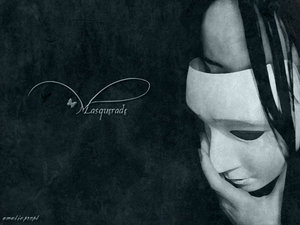|
This article was written as an assignment for the Hall of Aeris in the House of Umbrae Octo.
Anyone who has questions or different practices, please feel free to contact me.
Wicca is not just about casting spells and working magic. Wicca is also a wonderful religion, a continuous celebration of all aspects of life. The Wiccan calendar contains 13 full moons or Esbats and 8 Sabbats, or days of power, making 21 Wiccan ritual occasions. The Esbats are for celebrating the Goddess. The Sabbats mark the sun's yearly cycle and tell the story of The Wheel of the Year.

Yule is the beginning of our story. This is the Winter Solstice, the shortest day of the year, usually around December the 21st. It is on this day that we celebrate the Goddess giving birth to the God, a reminder that with death comes rebirth. It is a joyous celebration of family and friends, of peace and love and positive energy. Wiccans light candles and/or fire (the Yule log) to welcome the Sun's return. It is common for this ritual to be performed just before dawn, ending with the sun's rising. It is tradition to save part of the Yule log for use the next year and to bring luck into your home during the coming year.
Imbolc falls on February the 2nd. During this Sabbat, we celebrate the Goddess's recovery from giving birth and the God's growth as the days begin to get longer. It is the quickening of the year. This is the Festival of Light and Fertilization - sacred to the Irish goddess Brigit - a traditional time for purification, initiation and self-dedication.
Ostara, the Spring Equinox (when the day and night are equal, usually around March 21st), is also known as The Rites of Spring. This is when the God is flourishing in youth and the Goddess (in her Maiden aspect) blankets the earth in fertility. This is where their courtship begins. Ostara is a solar festival of fire, light and fertility. Eggs are a popular symbol of this holiday. This is a time of beginnings and of actions and for planting spells for future gain. It is also a time to bless seeds that will be planted in the garden.
Beltane (May the 1st) marks the emergence of the God into manhood. It is the great fertility festival where we celebrate the marriage of the Goddess and the God and the consummation of their relationship. This festival celebrates the transformation of maiden to mother through the mystery of sexuality. The Goddess's fertility is celebrated, usually with the May Pole and Beltane Eve is the perfect time for the Great Rite.
Litha, the Summer Solstice (around June the 21st) marks the longest day of the year, when powers in nature reach their highest point. The Earth is awash with the fertility of the pregnant Goddess, and the God is at the height of his power. Fire is lit to mark the longest day. It is a great time for handfastings, workings of empowerment, consummation, culmination and magick.
Lughnasad (August the 1st) is the festival of the first harvest. The God is losing strength and is dying. The Goddess is sad as she watches him die, yet is happy as she knows that he lives on inside of her as her child. This is a reminder that nothing in the universe is constant. It is usually marked with the Festival of Bread and a corn king is sacrificed.
Mabon, the Autumn Equinox (around September the 21st) is the completion of the harvest begun at Lughnasad. Day and night are equal. It is at this time that the God prepares to leave his body for rebirth. It is a time to enjoy the fruits of your labour and give thanks for abundance.
Samhain (on October the 31st), is the Witches' New Year and marks the death of the God and his the arrival in the Land of Youth, where he opens the gates so the souls can revisit their loved ones. It is said to be the day when the walls between the worlds are to be the thinnest and when contact with one's ancestors can tack place. It is also celebrated as the Festival of the Dead in certain countries. This is a time of reflection on the year and a celebration of our ancestors.
And again the Wheel turns… and it is Yule once more…

|









